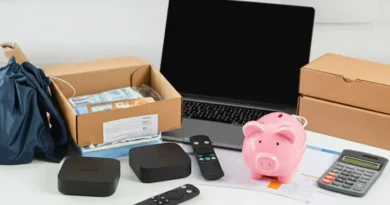How to Shop Smart and Avoid Impulse Purchases
Shopping can be an enjoyable pastime, but for many, it often leads to unintended impulse purchases that can wreak havoc on personal finances. Impulse buying refers to purchasing items on a whim without prior planning or consideration. While it can bring temporary satisfaction, it often leads to buyer’s remorse and financial strain. Understanding how to shop smart can help you avoid these unnecessary expenses and keep your budget intact.
To begin, one of the most effective ways to combat impulse buying is to create a shopping list before any trip to the store. A well-thought-out list keeps you focused on what you actually need, rather than what catches your eye. There’s an added benefit to this method: it’s a tangible reminder of your priorities, which can stave off temptations.
Furthermore, it can be helpful to set a budget for each shopping trip. Knowing how much you are willing to spend can serve as a buffer against overspending. Track your total as you shop; seeing the numbers adds a level of accountability that can deter impulse buys.
Another critical tactic is timing. Shopping when you are well-rested and less stressed can have a significant impact on your decisions. When you are tired, overwhelmed, or emotional, you may be more likely to make rash purchases. Try to avoid shopping during these moments. Instead, choose a time when you feel composed so that you can evaluate your purchases more rationally.
Additionally, consider the use of the “24-hour rule” when faced with an impulse buy. When you encounter an item that you feel compelled to purchase, give yourself a day to think it over. Often, after a little reflection, you may realize that the item was not as important or necessary as it seemed in the moment. This simple strategy can save you both money and regret.
Online shopping poses its own set of challenges regarding impulse purchases. It can be tempting to click “Add to Cart” without a second thought. One way to curb this is by unsubscribing from promotional emails or avoiding social media ads that exacerbate your urge to shop. Also, installing browser extensions that help track prices and alert you when an item goes on sale can reinforce smart shopping habits.
Moreover, consider evaluating your shopping environment. Brick-and-mortar stores often use strategies designed to trigger impulse purchases, such as end-cap displays or strategically placed sales items. Familiarize yourself with these tactics so you can be more aware of them and resist falling into their trap.
A practical way to help keep impulse buys in check is by adopting a minimalist mindset. Focus on the idea of quality over quantity. Investing in fewer, higher-quality items often results in greater satisfaction compared to frequently buying lower-quality goods that will need to be replaced. This shift in mindset can lead you to prioritize meaningful purchases that contribute to a curated lifestyle, rather than a cluttered one.
Moreover, it’s essential to recognize emotional triggers that lead to impulse purchases. If you often find yourself buying out of boredom, stress, or sadness, take an inventory of your feelings before shopping. Consider finding alternative activities to substitute for shopping; going for a walk, reading a book, or trying out a new hobby can provide a much-needed sense of fulfillment without the empty expenses.
Additionally, don’t underestimate the power of shopping with a buddy. Having a friend or family member shop with you can introduce a layer of accountability. They can provide a second opinion on your selections and help remind you of your budgetary goals. This social aspect can also make shopping a more pleasant experience, making it less likely you’ll seek comfort in impulse purchases.
Tracking your spending is another valuable tool. Reviewing your expenses regularly can help you identify patterns in your purchasing behavior. It may provide insights into times when you tend to make impulse buys or specific categories that often lead to financial regret. Being aware of these patterns is crucial for changing your shopping habits.
In conclusion, while it can be difficult to navigate shopping without falling into the trap of impulse purchases, implementing a few simple strategies such as creating lists, setting budgets, timing your shopping trips wisely, and understanding your spending triggers can make a significant difference. These techniques promote mindfulness in your purchasing decisions, enabling you to shop smartly while maintaining financial well-being. Remember, shopping should be a thoughtful process that enhances your life rather than depletes your bank account.




